Are you like most marketers who want to get more eyes on their newsletter – and do it with fewer frustrations and fuss? Let me walk you through how Facebook Lead Ads can make it happen.
Facebook Lead Ads make it super simple to collect information about potential subscribers. Beyond their name and contact details, you can even use the platform to gauge quirkier preferences – such as whether they like pistachio or vanilla ice cream, or are fans of summer sports over winter ones. With the option to create custom questions, the sky really is the limit.
And how do you get set up with Facebook Lead Ads – and upload your list into GetResponse? Just follow these simple steps.
Don’t forget that there are also other types of advertising campaigns you can run on Facebook. You can now create Lookalike Audiences or run retargeting campaigns using your own list or segment. It’s all available in the GetResponse Facebook Ads tool.
Create your Facebook Lead Ads
1. Start by creating a new campaign. Then choose lead generation as your target.
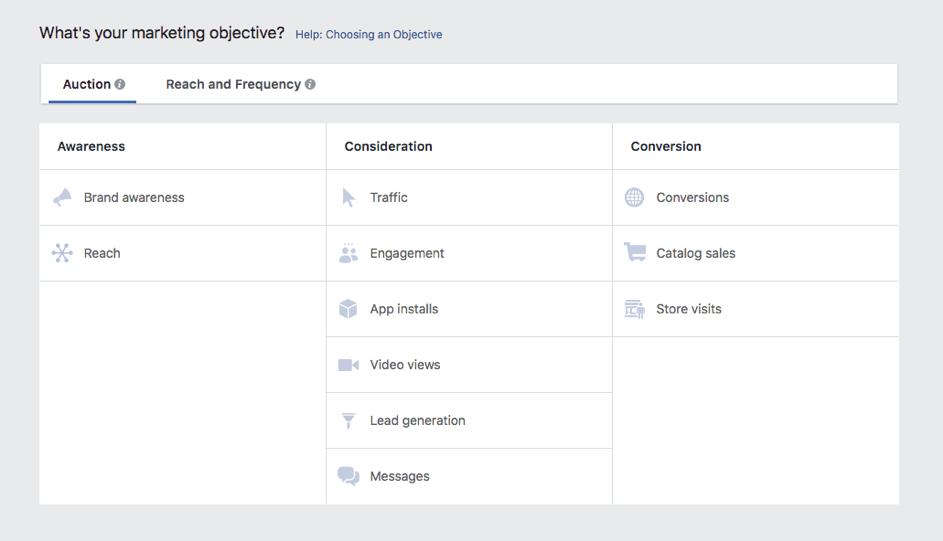
2. Enter a campaign name.
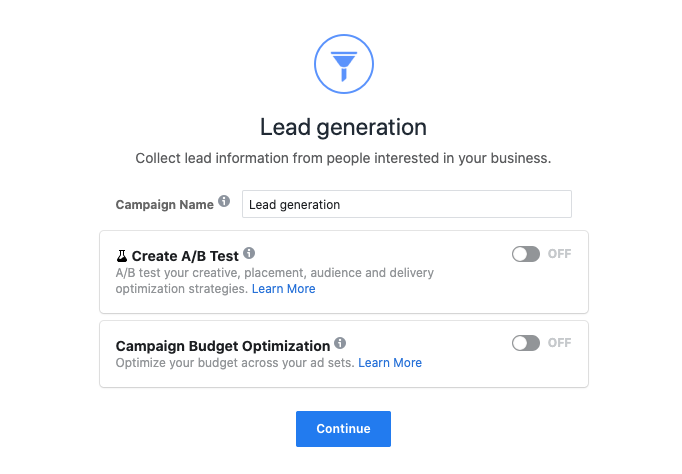
3. You can select standard ad sets, as well as set the target group. Let’s say you sell dog food. So you choose to target people who own or are interested in Labradors, as well as pet food.
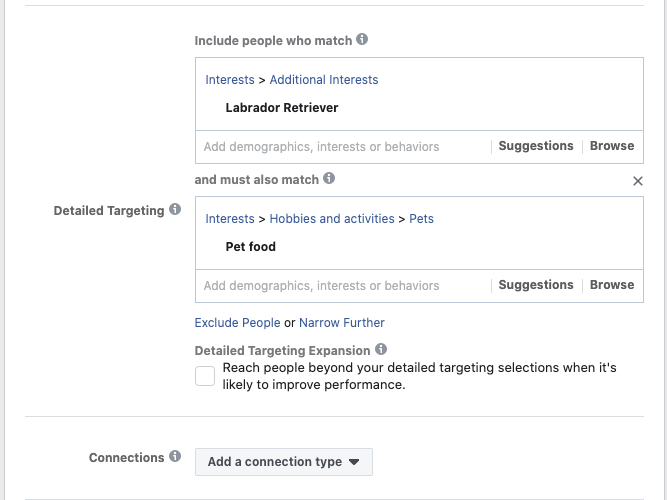
4. Set the budget and ad schedule.
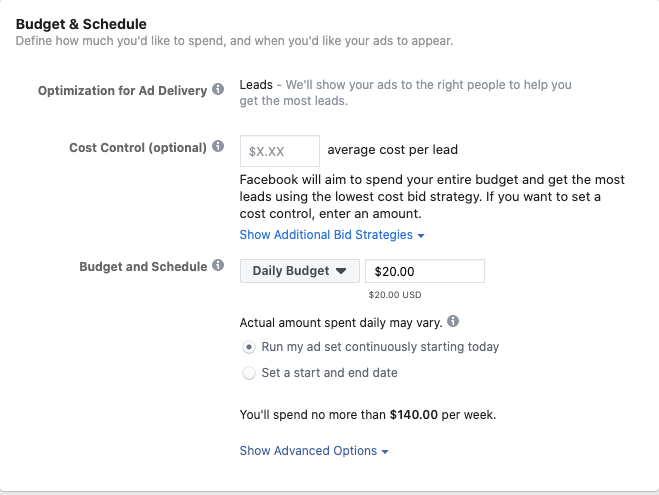
5. Next, it’s time to design your campaign. You can use the same images and video as in a normal campaign. Then, create your lead form by clicking on + New Form.
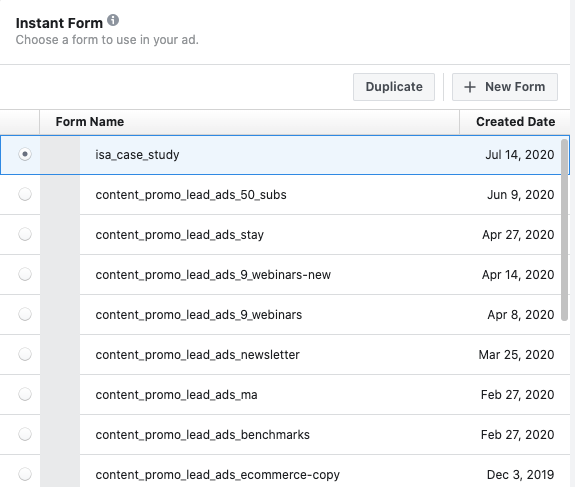
6. Before creating a lead form content you have two lead form options – We recommend the 1st one (More Volume) for the start. But if you notice that the leads coming your way are low quality, consider changing the option to “Higher intent”.
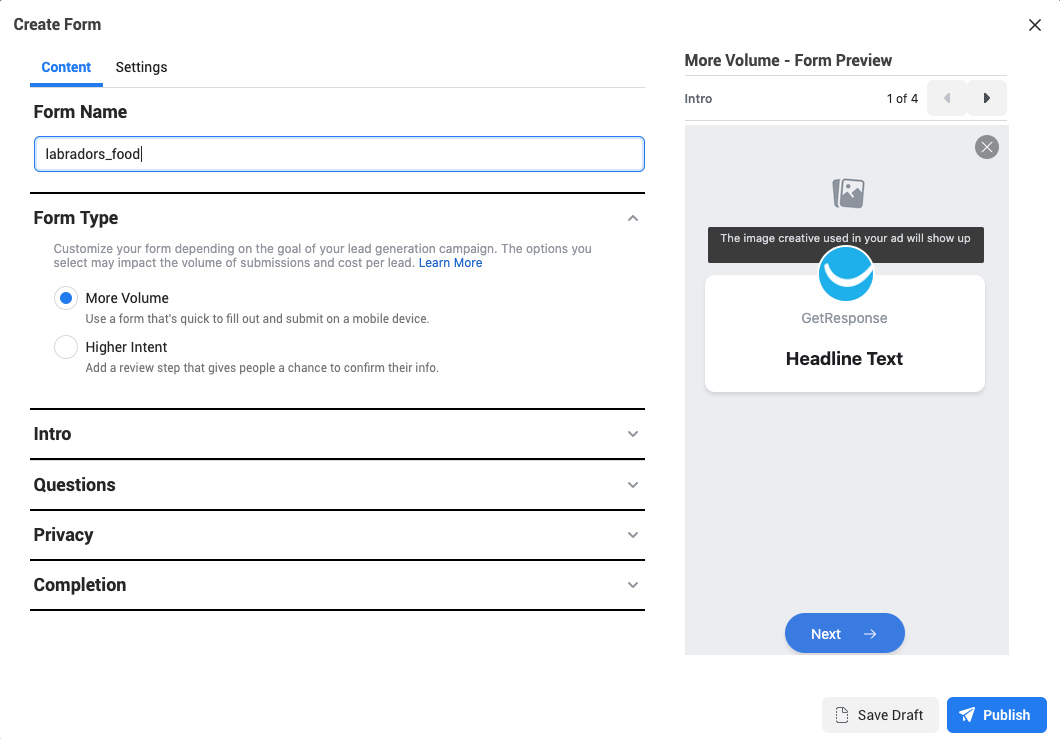
7. You can choose the form type, intro copy, questions, and links to your privacy policy and thank you page. In our pet food example, we’ve asked for a first name and email, and their favorite type of Labrador:
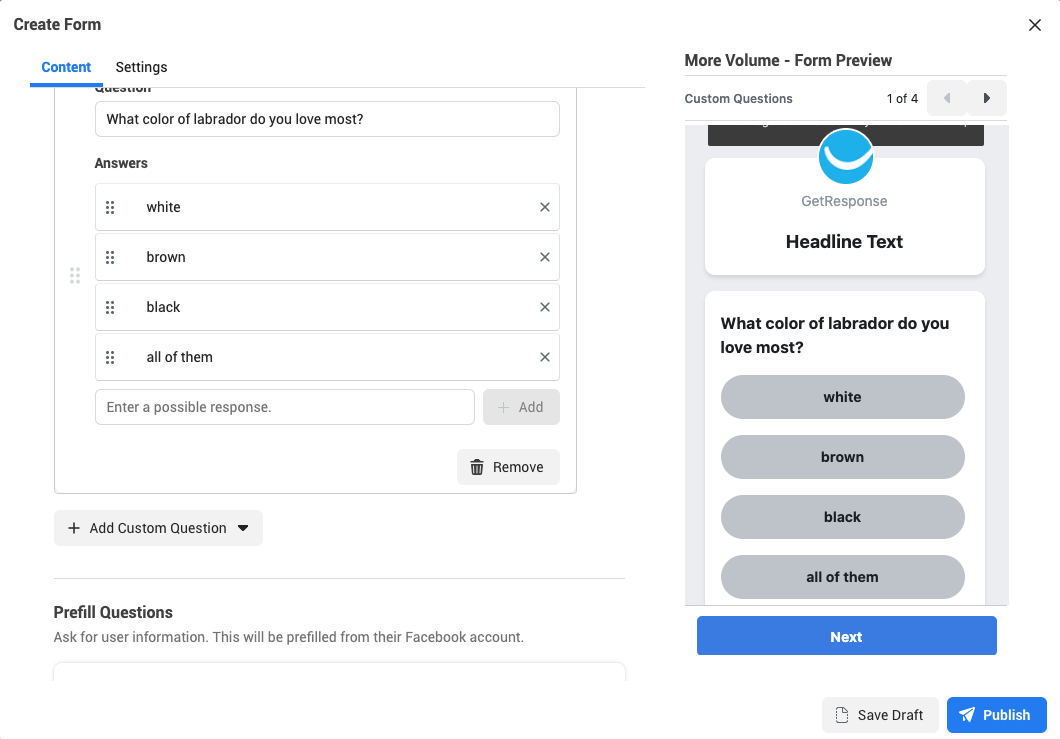
8. Now save the form and you’re ready to launch the campaign!
Was that process worth the effort? You bet!
Case study: Learn how InfoShare Academy, a provider of programming courses for IT beginners, gained 1200 new contacts using Facebook Lead Ads and a carefully crafted ebook.
Upload leads to GetResponse
Completed forms should start dripping in. How do you import them into GetResponse? Choose from two easy options:
Option 1: Manually export contacts from Facebook and upload them to GetResponse
Navigate to the publishing tools section in Facebook, download your leads, and upload the list to your GetResponse campaign:
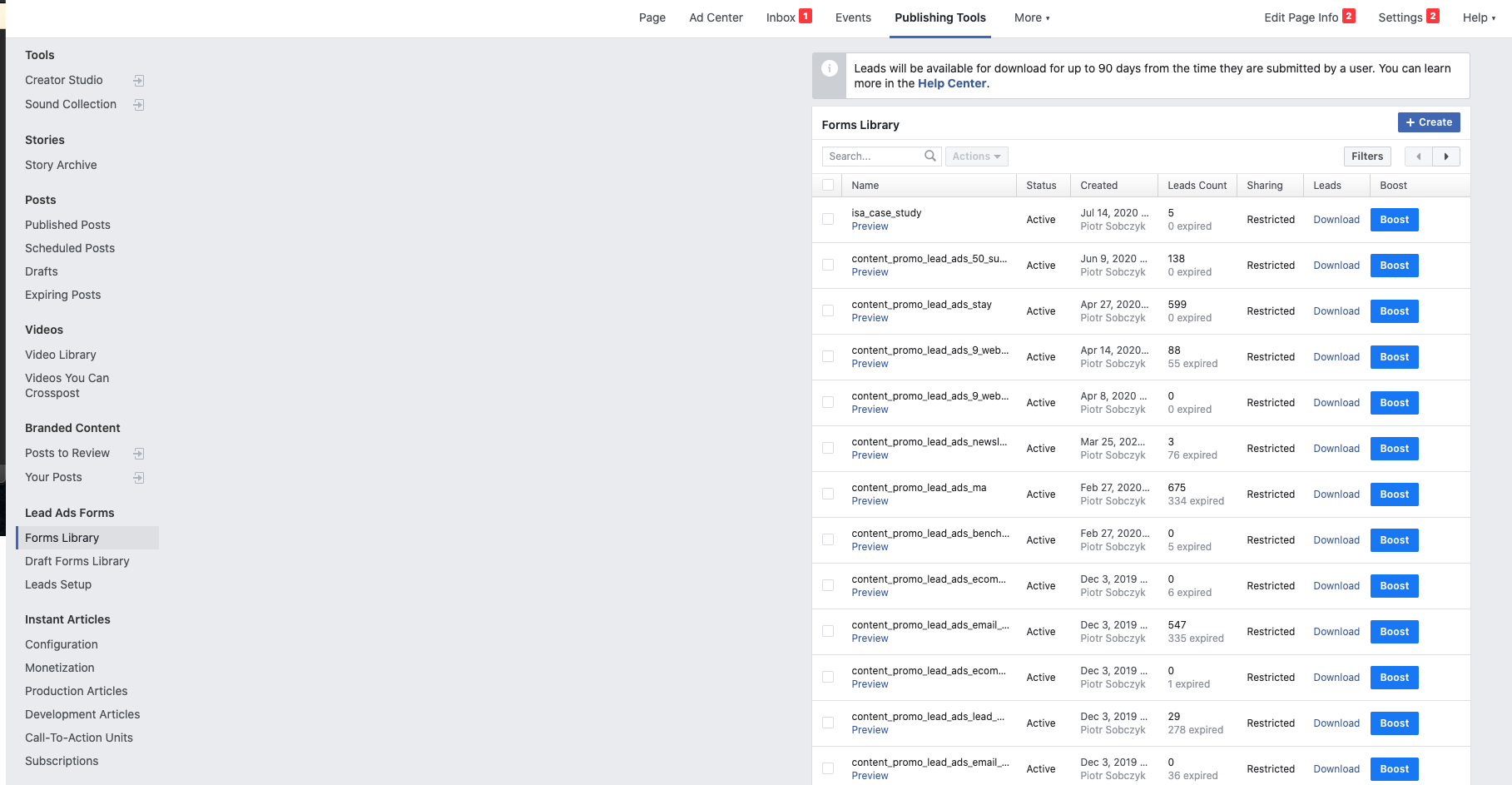
Option 2: Automatically send your new leads from Facebook to GetResponse via Zapier
Use our Zapier integration to automatically import leads. Not sure how to do it? Follow along 🙂
Note: You can start this process either on the Zapier website or right in your GetResponse dashboard. Although the process is pretty much the same, we’ll refer to the latter scenario.
1. Log into your GetResponse account and click on Integrations and API from the main menu in the top left corner of your screen. Then go Integration by Zapier tab and connect your Zapier with GetResponse accounts.
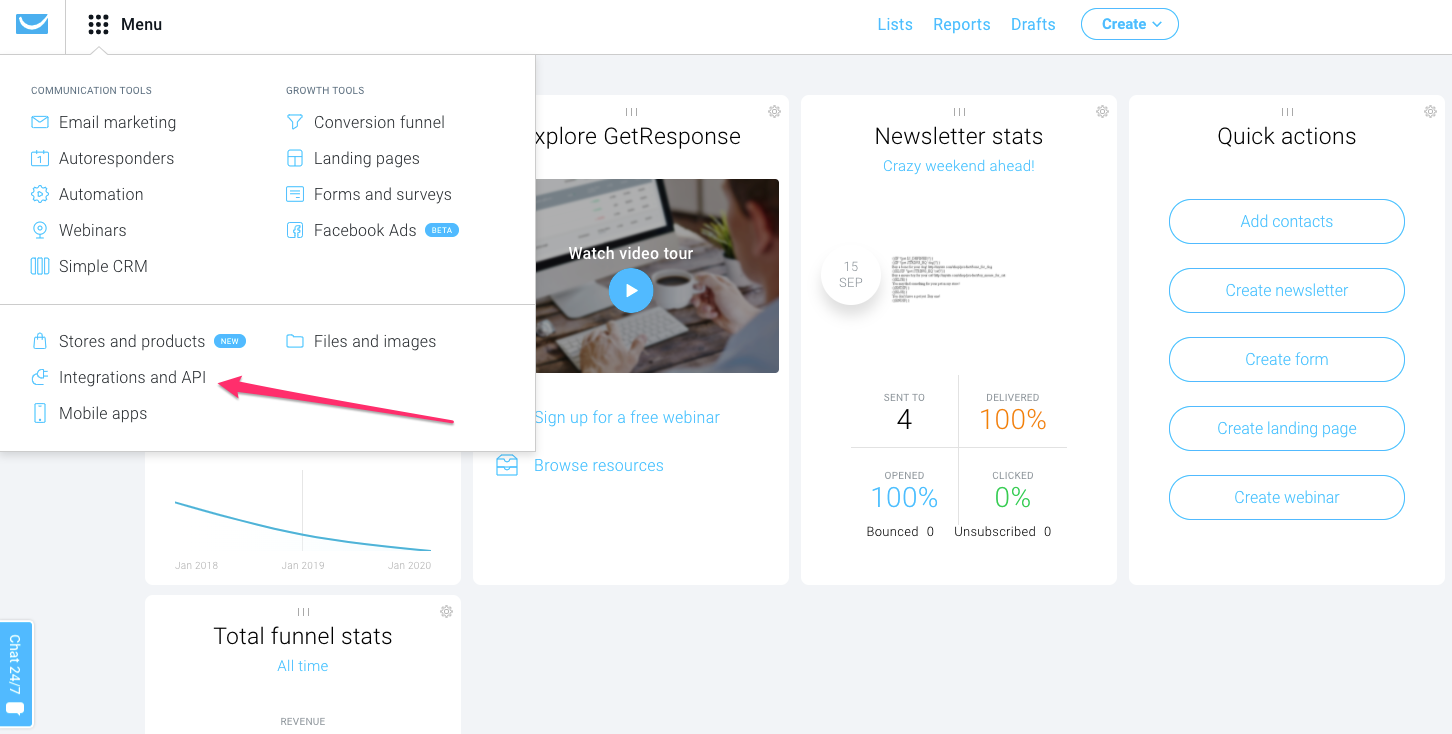
2. After successfully connecting the apps (you can find a complete walkthrough for this in our Zapier integration announcement), scroll down to find the Zap templates. There, click on the Facebook Lead Ads > GetResponse template to start configuring it.
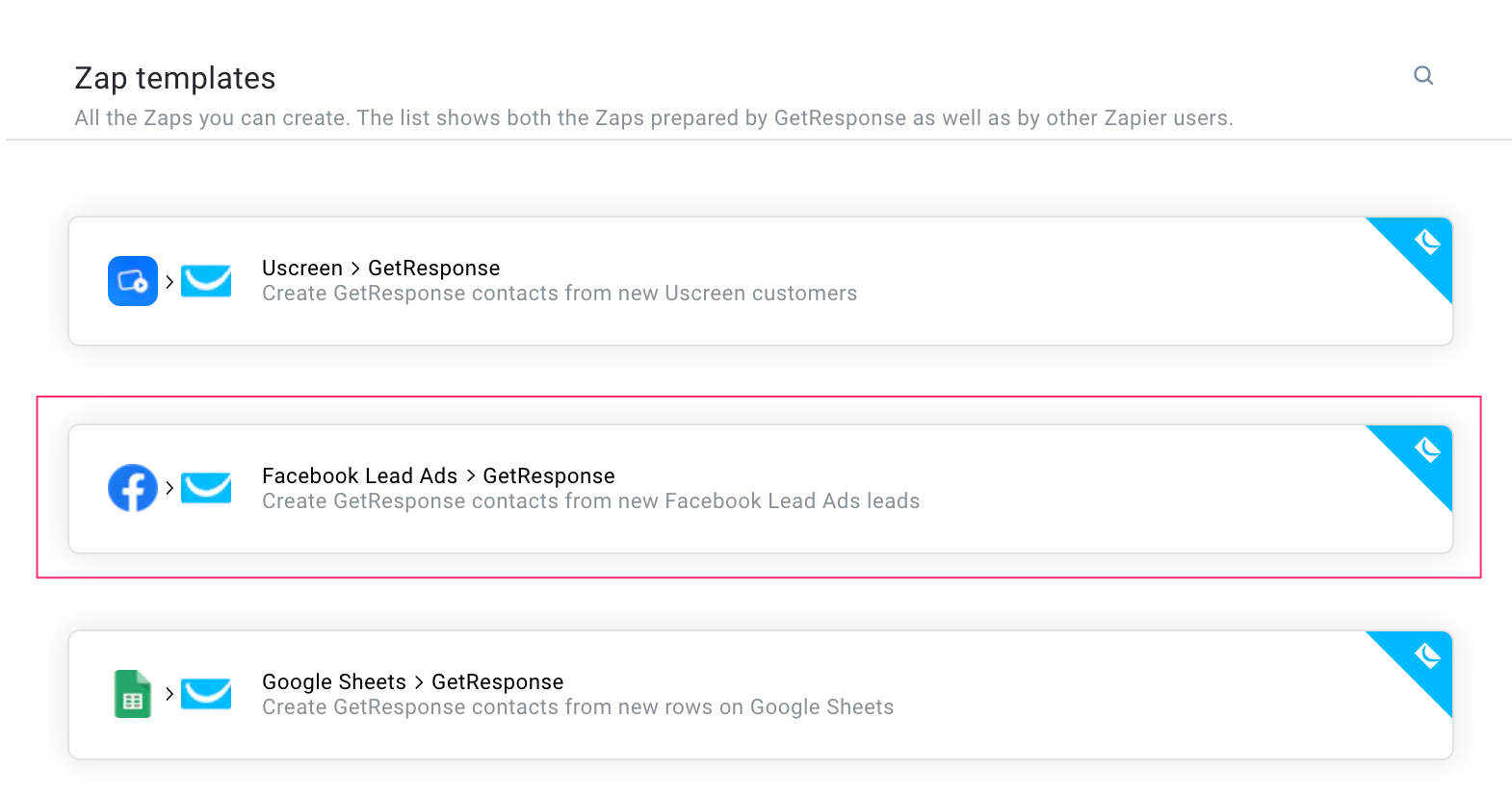
3. Now, find your personal account that’s connected with your Business Manager or Ads Manager. If this is your first time using Zapier, click on “Edit Accounts” and connect your account to Zapier.
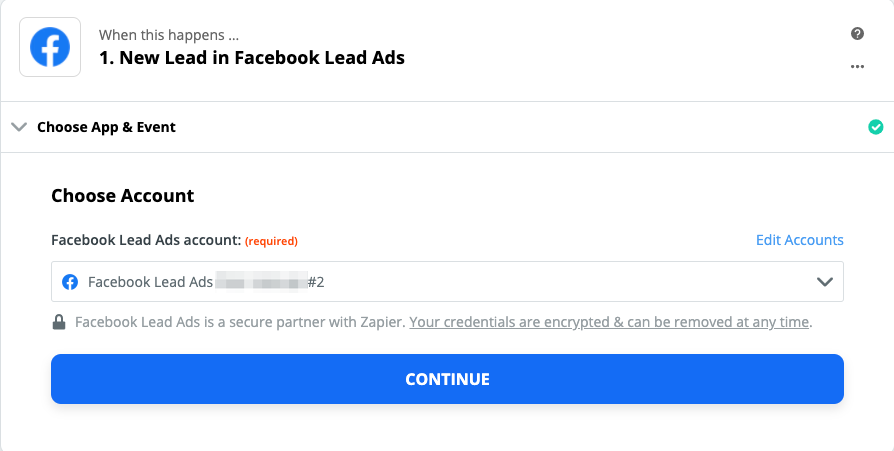
4. Next, find your page and choose the lead form you’d like to automatically send your contacts from.
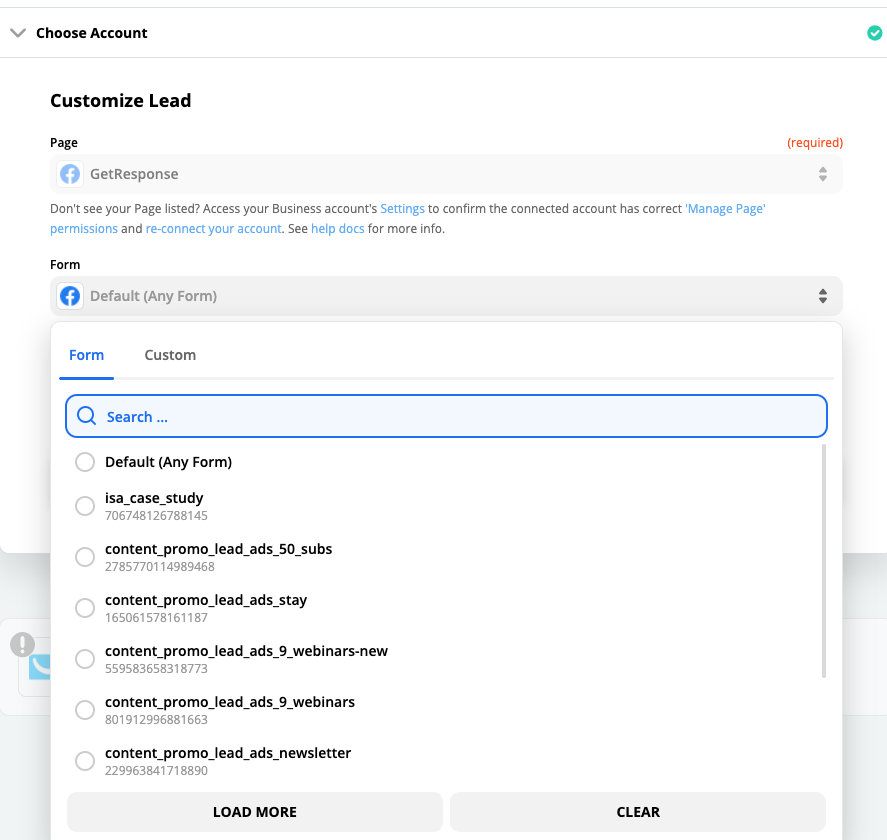
5. Test your trigger and click on the continue button.
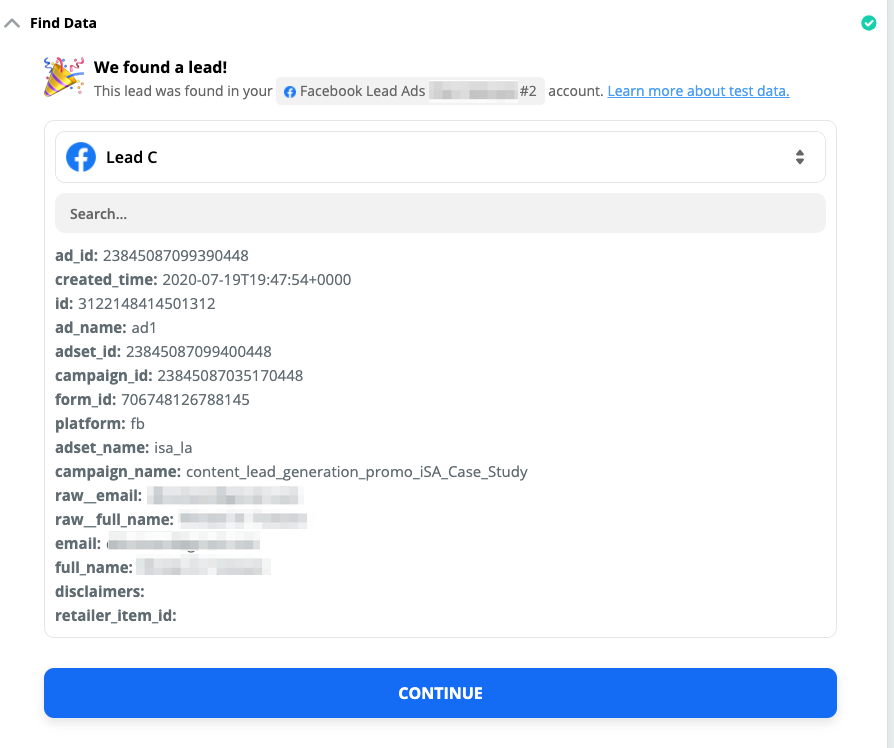
6. Keep clicking on the continue button.
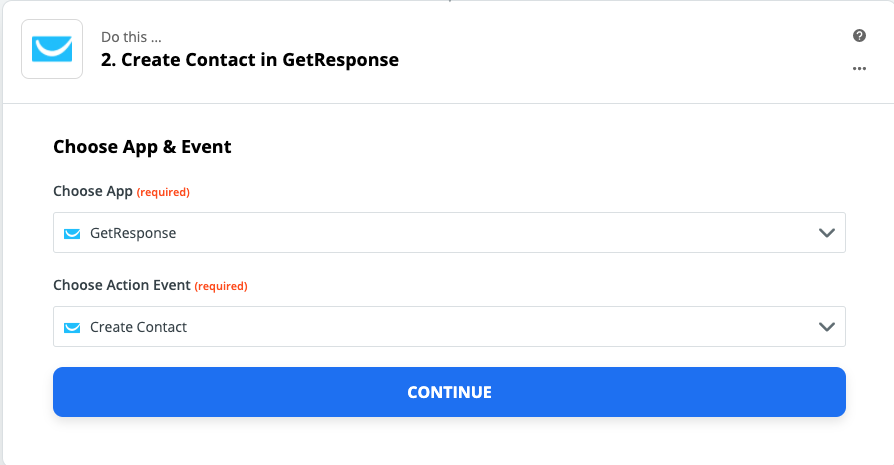
7. Now it’s time to customize your new contact and link the form fields from Facebook with the information in your GetResponse account.
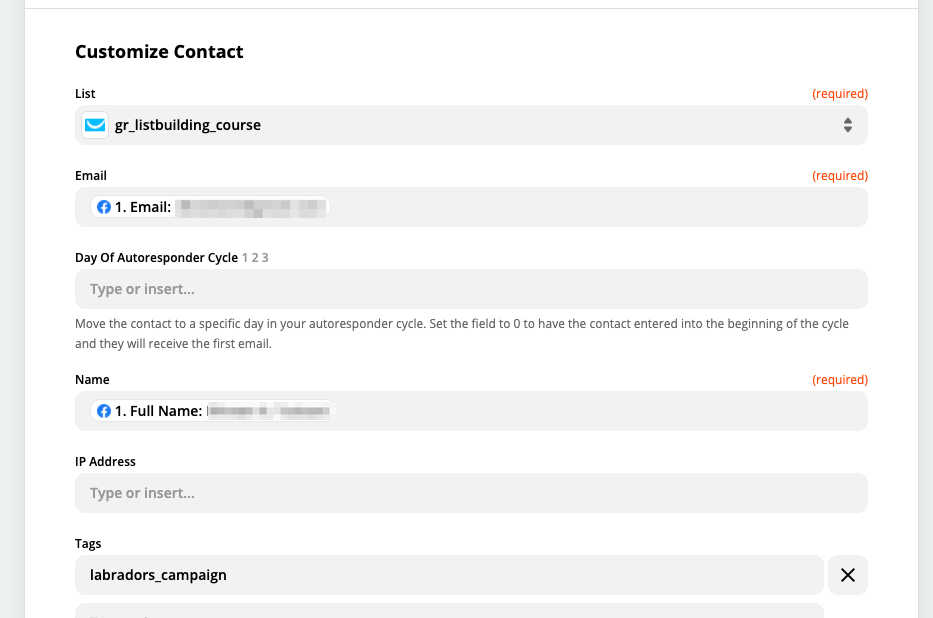
Pro tip: Consider creating specific tags for your new contacts. This will help you track them and monitor the overall effectiveness of your lead campaign.
8. It’s almost done. Let’s test your connection and check that everything is set up correctly,
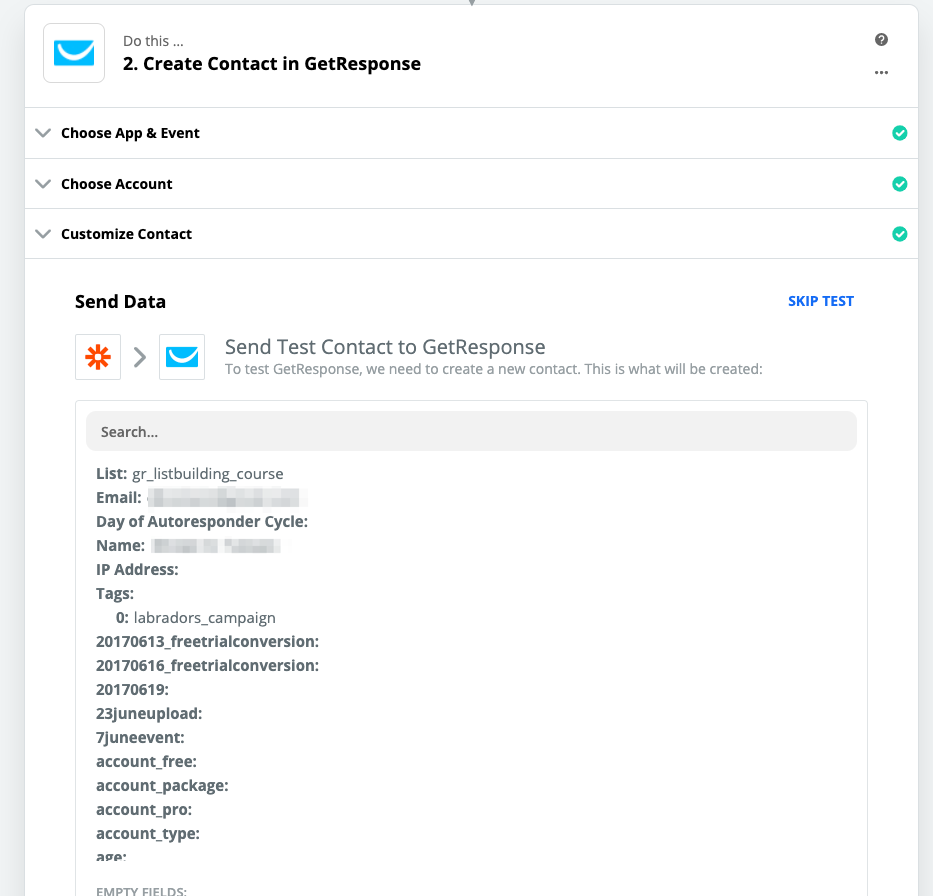
9. Once the test is done, you can publish your new zap!
Find and reward new signups
As you can see, Facebook Lead Ads makes it easy to grow your subscriber list. And because Facebook downloads some data automatically, it’s faster to get the insights you need, compared to other email list building tactics.
Remember to reward people who give you their information – since they probably won’t share it with you for free. You could offer a free ebook, webinar, article or some other type of lead magnet else that matches their interests.
It’s also worth running a remarketing campaign, to target people who visited your landing page but didn’t fill in the form. There’s a higher probability they’ll complete the action compared to cold leads. And that means a lower cost per lead. You can learn more on how set this up in our article on designing Facebook ads in GetResponse.
Good luck!
